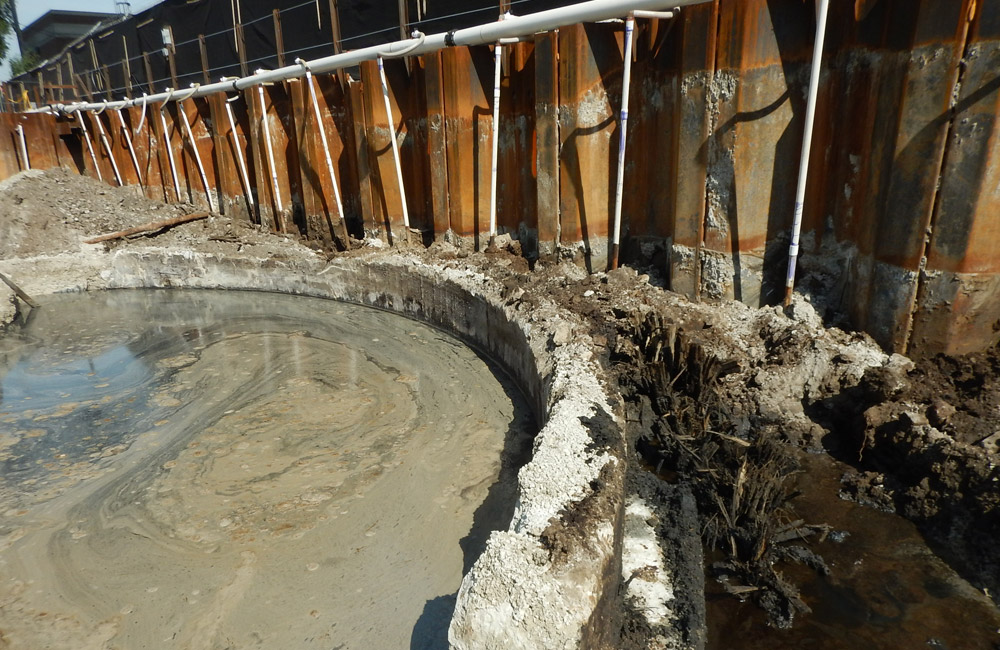SOLUTION
We evaluated multiple in-situ remediation methods, including ISS, thermal, ISCO and SISCO, and some proved to be promising. The relevant permitting agencies were skeptical about any treatment that potentially could alter the physical or chemical properties of the soil or groundwater, and thus endanger the Skyway foundations.
The compromise solution was to implement earth retention and containment systems for the 25-foot setbacks around the foundations, combined with deep excavation of the rest of the site. Despite in-depth planning and extensive approval processes, complications continued to arise during the implementation phase. While driving in the sheeting for the earth retention systems, the team frequently encountered original and temporary foundation systems and structures from the former MGP and older Skyway foundations that had been abandoned in place without documentation at the time. We worked around the obstacles and implemented a creative soldier pile and cribbing inside retention system to box off the large obstructions that were stopping installation of the sheeting. Having an integrated design and construction team helped prevent standby time each time we encountered an obstruction that required all hands on deck.
Excess groundwater at the site needed to be collected, treated and discharged. Fortunately, the project site was adjacent to an active Metropolitan Water Reclamation District (MWRD) pumping station. This allowed the team to save money by routing piping directly to the pumping station, instead of constructing a separate manhole and piping. The team’s solid relationships with MWRD engineers helped make this possible.
